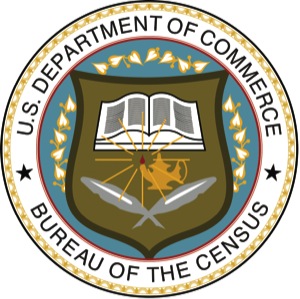
Offering no revised numbers for cities, and cutting by approximately 30 percent its 2010 count of same-sex couples living in the country, the U.S. Census Bureau recently adjusted its inaugural collection of data about gay and lesbian couples.
In recent days, some San Diego news outlets have reported as fact that San Diego has almost 6,000 same-sex couples and ranks No. 5 in the U.S. in terms of highest concentration of partnered gays and lesbians cohabitating. Yet, there is no way of knowing exactly what the adjusted figures will reveal when released. Given the sharp drop in nationwide estimates, there are also likely to be significant differences from the 2010 statistics vis a vis San Diego’s revised same-sex household figures.
The reason for the differences, according to Census Bureau officials has to do with names such as Alex, Casey, Jamie and Ryan. Those and other popular, gender-ambiguous names could represent a man or woman. Combined with mistakes in checking male or female made by respondents when completing the bureau’s forms, the first-ever attempt to ascertain same-sex coupling data may have been doomed to inaccuracy from the start.
As it turns out, gender-neutral names resulted in a miscount of about 250,000 same-sex households in total. The Census Bureau released its revised estimates in late September with same-sex couples now surpassing 646,464 – down from the 902,000 that were originally tabulated. Both figures are well below 1 percent of the U.S. population. The census also found that its initial count of legally married same-sex couples (349,377) to actually be 131,729.
Although recounted 2010 census numbers of same-sex couples haven’t been released at the county or city level, it is now believed that California has 69,841 unmarried same-sex couples and 28,312 married. The 2010 American Community Survey also found there were an estimated 7,205 unmarried same-sex couples in San Diego County.
After years of being invisible in the public census, the LGBT community finally was officially counted in 2010. The census allowed same-sex couples to choose if they were married or unmarried partners and provided a glimpse of the changing face of marriage in the United States.
While the exact numbers may never be known, as people self-identify on the census, the inclusion of same-sex households is a step to equality for the LGBT community.
“We know that there are people that for a range of reasons choose not to identify themselves as being gay or in a same-sex relationship,” said Rebekah Orr, communications director of Equality California. “The truth is that we have more information than we had in the past, but there’s a lot more to know.”
The census, taken every 10 years, measures the United States’ population and serves as a snapshot of the demographics of the country, state and city. This information provides the government with what services are needed and where. By counting the number of same-sex couples and their families, the government and businesses can better provide for them.
“Being counted is a really big deal,” Orr said. “We said on a number of different issues that invisibility is inequality and when folks are invisible, inequality is virtually guaranteed.”
Another benefit of same-sex couples being counted in the survey is that it helps service providers, from domestic violence support to childhood education, become educated and prepared.
In addition to government agencies, the new census data is also helpful for local businesses.
“I think that more knowledge about how to reach the LGBT community leads one to want to know how to most effectively market to them,” said Tom Luhnow, chief executive officer of the Greater San Diego Business Association. “The census shows how large a chunk of the overall market (LGBTs) comprise.”
Luhnow recently participated in a workshop with Community Marketing Inc. of San Francisco that showcased the demographic data, buying patterns and more of the LGBT community.
“I had our all-time high turnout of 66 people because they wanted to know more specific data on how to reach the LGBT market, so there’s certainly interest,” Luhnow said.
While Equality California didn’t specifically lobby to add the LGBT data to the census, it did help to create awareness of the new questions about same-sex couples and their families. Community forums both informed people of the new census and explained why it was important.
Although the addition of same-sex options on the census opened the door to equal rights and opportunities for the LGBT community, according to some there’s still work to be done.











You made an error in your reporting. The Census Bureau did not revise figures based on uncertain names like Alex, Ryan, etc as you claim. It revised the numbers based on incidences of names like Elizabeth marking male and Edward marking female. In other words, when names indicated with over a 95% proabability that an error was made in the marking of the gender item. This is clearly stated in the published report. I know what the edit did as I am the Chief of the Famiily Branch that constructed the edit that revised the numbers.
Martin O’Connell
Chief, Fertilty and Family Branch
US Census Bureau